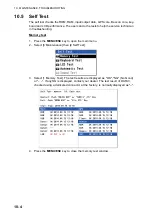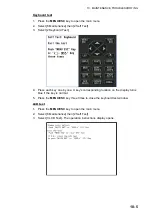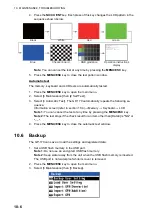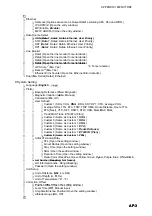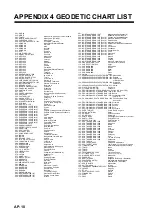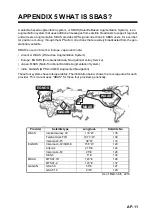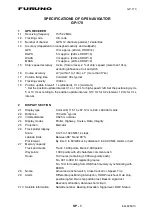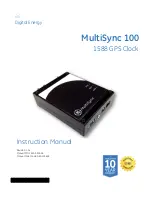
10. MAINTENANCE, TROUBLESHOOTING
10-7
4. Select [1 Backup User Setting], [2 Load User Setting], [3 Import GPX (Overwrite)],
[4 Import GPX (Addition)] or [5 Export GPX].
[Backup User Setting]: Saves the current settings to a USB flash memory.
[Load User Setting]: Loads the saved settings from a USB flash memory.
[Import GPX (Overwrite)]: Imports the GPX data (marks, waypoints and routes)
from a USB flash memory. The GPX data in the GP-170 are deleted.
[Import GPX (Addition)]: Imported data is added to the GPX data in the GP-170.
(You can store a maximum of 2,000 marks, 100 routes, and 1,000 waypoints.)
[Export GPX]: Exports the GPX data (marks, waypoints and routes) in the GP-170
to a USB flash memory.
The confirmation message appears.
5. Select [1 Yes]. The message "Now Processing.... "appears.
After the process is complete, the GP-170 operates as follows, or do the following
according the menu item selected at step 4:
• [Backup User Setting]: The message window automatically closes.
• [Load User Setting], [Import GPX (Overwrite)], [Import GPX (Addition)]: The
GP-170 restarts.
• [Export GPX]: After the message window shows 100%, press the
MENU/ESC
key to close the message window.
Note:
If a USB flash memory is not set, the following message appears.
Note:
Route no. 100 is reserved for the monitored route sent from an ECDIS. A route
imported from a USB flash memory may also be assigned this number when that route
becomes the 100th route registered in the GP-170. Whenever a monitored route is re-
ceived, route no. 100 is written over to import the monitored route.












